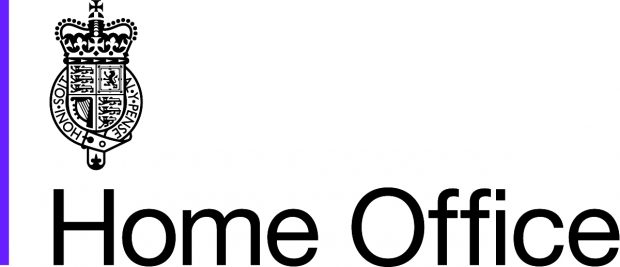What is Operation TEMPERER?
- Operation TEMPERER is a joint contingency operation to provide military support to the police in extreme national emergency circumstances, such as surge support for a major domestic terrorist attack or threat.
- Defence personnel will always be deployed alongside, and operate under the command of, armed police officers.
- Operation TEMPERER was created in 2015 and last reviewed by the police and military in September 2023. It includes plans for armed military personnel to be deployed in support of police in extreme circumstances, in order to undertake clearly defined roles.
Who is responsible?
- Operation TEMPERER has been designed by the Ministry of Defence, the Home Office and the National Police Chiefs Council and it is under the legal authority of the Royal Prerogative.
What is the scale of TEMPERER in its entirety?
- Operation TEMPERER has c. 1,500 personnel held at heightened readiness for specific roles to support Armed Police. Expansion beyond this figure could be requested by Police and a scaled response will be generated by the Ministry of Defence.
- Operation TEMPERER is an operation which covers Great Britain and does not mean there is a specific threat to areas where military personnel are deployed.
FAQ’s
Has Operation TEMPERER been activated before?
- Operation TEMPERER was used for the first time in May 2017 following the Manchester Arena bombing and again in the wake of the Parsons Green manhunt in September 2017.
- Most military personnel deployed in the last TEMPERER activation guarded sites normally protected by armed police officers. This freed up armed police officers to deploy in high-profile, public-facing locations.
When TEMPERER is enacted, does it mean the Government is imposing some sort of martial law?
- Operation TEMPERER is activated only to support the Police in extreme circumstances and does not restrict civil liberties in any way.
Is Operation TEMPERER a sign that police forces are not properly trained or that they are underfunded?
- Deployment of the military under these circumstances is not routine and is only likely to occur in extremis, where it is judged that police armed capacity may require additional support.
- Counter terrorism policing is a national priority, and its funding is ringfenced. Funding for counter terrorism policing continues to total over £1 billion, including continued funding for armed policing and the Counter Terrorism Operations Centre.
- The Home Office has boosted funding for policing by £287 million, taking total funding for the police to £17.2 billion in 2023/24. For more information, see: Policing to receive up to £287 million funding boost next year - GOV.UK (www.gov.uk)
How did TEMPERER start?
- Following the attacks in Paris in January 2015, the Prime Minister asked the Home Secretary to work with the police and the Defence Secretary to ensure that the police were able to call upon significant support from the UK military in the event of a similar incident occurring in the UK.
- Operation TEMPERER is the result of that work, a contingency plan enabling the police to have the option for large-scale, time-limited military assistance should the need arise.
- There are tried and tested arrangements for the provision of military support to the police and other emergency responders. The Government continuously keeps these arrangements under review. Any call for large-scale military assistance would be led by the Police.
Under Operation TEMPERER, what will the military do?
- The plan will enable military personnel to deploy quickly to support the police. Military personnel would predominantly take on protective security guarding roles that free up armed police officers to respond to the terrorist attack / incident / investigation [dependent on nature of activation] and support operational activity.
- Defence personnel will be employed in protective security roles, although three Standby Battalions receive additional training to deliver overt proactive support to armed police if required.
Under what circumstances will the plan be activated?
- Operation TEMPERER is available if the police decide that they require military support, enabling them to respond to exceptional incidents. It is not appropriate to comment on the exact circumstances in which support is requested.
Where are these troops coming from? Which units? Where are they being held?
- Military personnel with the appropriate skill set for Operation TEMPERER would be drawn from the three Services (Navy, Army, RAF). Units held at readiness change regularly based on their other commitments and are drawn from across the UK based on their ability to fulfil this task and their geographical location.
What training have these personnel had?
- In addition to routine training, military personnel in scope for Operation TEMPERER receive a specific training package to be able to operate alongside the police in this role in the UK.
Will personnel be deployed to the streets?
- Military personnel are most likely to be deployed alongside the police at nominated sites to provide additional protective security.
- If requested, units which have received specific training to support the police may be deployed in wider counter terrorism operations.
- The Military may be deployed to support armed police at public locations, to deter a terrorist attack and provide reassurance to the public.
- If further support is required, additional military personnel can be made available to the police to facilitate an increase in armed policing across the country.
What are the rules of engagement?
- Military personnel are required to act within UK laws.
- Armed Forces personnel will only assist the police if needed with specific tasks where the required capacity or capability can’t be provided by the police, as they do from time to time under the MACA process. This would only be in a counterterrorism capacity, rather than routine policing activities.
- They will not perform any other routine duties of unarmed police officers and will not have powers of arrest.
- For security reasons we can’t get into specific details of where they’ll be deployed.
